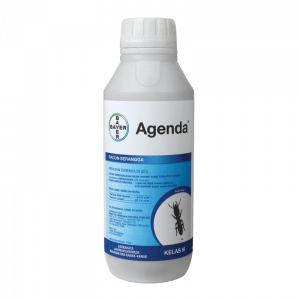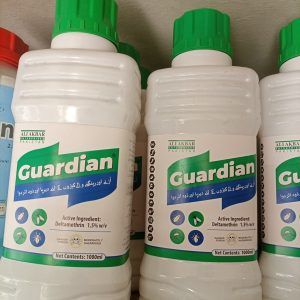Bed bugs are small, blood-sucking insects that can be found in homes, hotels, and other places where people sleep or spend time. They are a growing problem worldwide, and infestations can be difficult and costly to eradicate.
In this article, we will discuss the top bed bug prevention tips to help you avoid an infestation.

Signs of a Bed Bug Infestation
The first step in preventing a bed bug infestation is knowing the signs to look for. Some common signs of a bed bug infestation include
- Red, itchy bite marks on the skin, often in a row or cluster
- Small, reddish-brown bugs on bedding, furniture, or walls
- Tiny black or dark brown spots on bedding or furniture, which are bed bug feces
- A sweet, musty odor, which is produced by bed bug pheromones
If you suspect that you have a bed bug infestation, it is important to act quickly to prevent it from spreading to other areas of your home or building.
Top Bed Bug Prevention Tips
Here are the top bed bug prevention tips to help you avoid an infestation:
1. Inspect Secondhand Furniture
If you’re buying used furniture, be sure to inspect it carefully for signs of bed bugs before bringing it into your home. Check all cracks, seams, and crevices for bugs, eggs, or feces.
2. Use Protective Covers
Encase mattresses, box springs, and pillows in protective covers that are designed to keep bed bugs out. These covers should be made of high-quality materials and should be regularly inspected for tears or other damage.
3. Reduce Clutter
Bed bugs love clutter, as it provides them with plenty of hiding places. Keep your home as clutter-free as possible to reduce the number of places where bed bugs can hide.
4. Launder Clothing and Bedding
Wash clothing and bedding in hot water and dry them on high heat to kill any bed bugs that may be present. This is especially important if you have recently traveled or have had guests stay in your home.
5. Vacuum Regularly
Vacuum carpets, rugs, and upholstery regularly to remove any bed bugs or eggs that may be present. Be sure to dispose of the vacuum bag in a sealed plastic bag to prevent the bugs from escaping.
6. Seal Cracks and Crevices
Seal any cracks or crevices in your home to prevent bed bugs from entering or escaping. This includes sealing around windows and doors, as well as caulking any gaps in baseboards or other areas where bugs could enter.
7. Use Insecticides
Insecticides can be effective in preventing bed bug infestations, but they should be used with caution. Always read and follow the label instructions carefully, and consider hiring a professional exterminator to apply the insecticide for you.
8. Be Cautious When Traveling
Bed bugs are often found in hotels, so it’s important to be cautious when traveling. Before booking a hotel room, read reviews online to see if there have been any reports of bed bugs.
When you arrive at your hotel, inspect the room carefully for signs of bed bugs, such as bugs or feces on the bedding or furniture. Keep your luggage off the floor and away from the bed, and store it in the bathroom if possible.
9. Use Heat Treatments
Heat treatments can be an effective way to kill bed bugs without using chemicals. This involves heating the infested area to a temperature of at least 120 degrees Fahrenheit for several hours.
This can be done using a professional exterminator or by using a portable heat treatment device.
10. Educate Yourself
One of the most important bed bug prevention tips is to educate yourself about these pests. Learn about their habits, signs of an infestation, and the best ways to prevent and treat an infestation. This can help you take proactive measures to protect yourself and your home from bed bugs.
11. Keep an Eye Out for Bed Bugs
Be vigilant for signs of bed bugs, even if you haven’t had an infestation in the past. Regularly inspect your bedding, furniture, and other areas where bed bugs are likely to hide. This can help you catch an infestation early and prevent it from spreading.
12. Don’t Panic
If you do discover bed bugs in your home, don’t panic. Bed bugs can be difficult to eradicate, but with the right treatment and prevention measures, you can get rid of them. Call a professional exterminator to assess the situation and develop a treatment plan.
13. Consider Using a Bed Bug Dog
Bed bug dogs are specially trained to detect the presence of bed bugs. They can be a valuable tool in detecting and treating an infestation, especially in large buildings or multi-unit dwellings.
14. Use Bed Bug Monitors
Bed bug monitors can be placed under the legs of furniture to detect the presence of bed bugs. These monitors can be a useful tool in preventing and detecting an infestation.
15. Follow up with Treatment
If you have had a bed bug infestation, it’s important to follow up with a treatment to ensure that all bed bugs have been eradicated. This may involve multiple treatments over several weeks or months.
Conclusion
Bed bugs can be a frustrating and expensive problem to deal with, but with the right prevention and treatment measures, you can avoid an infestation.
Bed bugs can be kept at bay by inspecting used furniture, using protective covers, reducing clutter, laundering clothing and bedding, vacuuming regularly, sealing cracks and crevices, using insecticides, being cautious when traveling, using heat treatments, educating yourself, keeping an eye out for bed bugs, not panicking, considering using a bed bug dog, using bed bug monitors, and following up with treatment.
FAQs
-
Are bed bugs only found in beds?
No, bed bugs can be found in many places, including furniture, luggage, and clothing.
-
Can bed bugs transmit diseases?
No, bed bugs are not known to transmit diseases to humans.
-
What do bed bug bites look like?
Bed bug bites typically appear as red, itchy welts in a row or cluster.
-
Can I get rid of bed bugs on my own?
It can be difficult to get rid of bed bugs on your own, and it’s often best to call a professional exterminator.
-
Can bed bugs be prevented entirely?
While it’s difficult to completely prevent bed bugs, taking preventative measures like those outlined in this article can greatly reduce the risk of an infestation.

Dr. Ahmed is a renowned entomologist with over 20 years of experience in studying insects. He obtained her Bachelor’s degree in Biology from the University of Punjab, and then completed his Master’s and Ph.D. in Entomology from the University of the Punjab.
Dr. Ahmed has conducted extensive research on the behavior, ecology, and evolution of insects. His work has been published in numerous peer-reviewed scientific journals and has been presented at international conferences. He has also served as a consultant for various organizations, including government agencies and private companies.










 Bayer Agenda 25 EC (Fipronil) 1 Liter Pack - Best Price in Karachi
Bayer Agenda 25 EC (Fipronil) 1 Liter Pack - Best Price in Karachi  Pronil ST 25% EC - Anti Termite Killer
Pronil ST 25% EC - Anti Termite Killer  Guardian 1 Liter
Guardian 1 Liter 